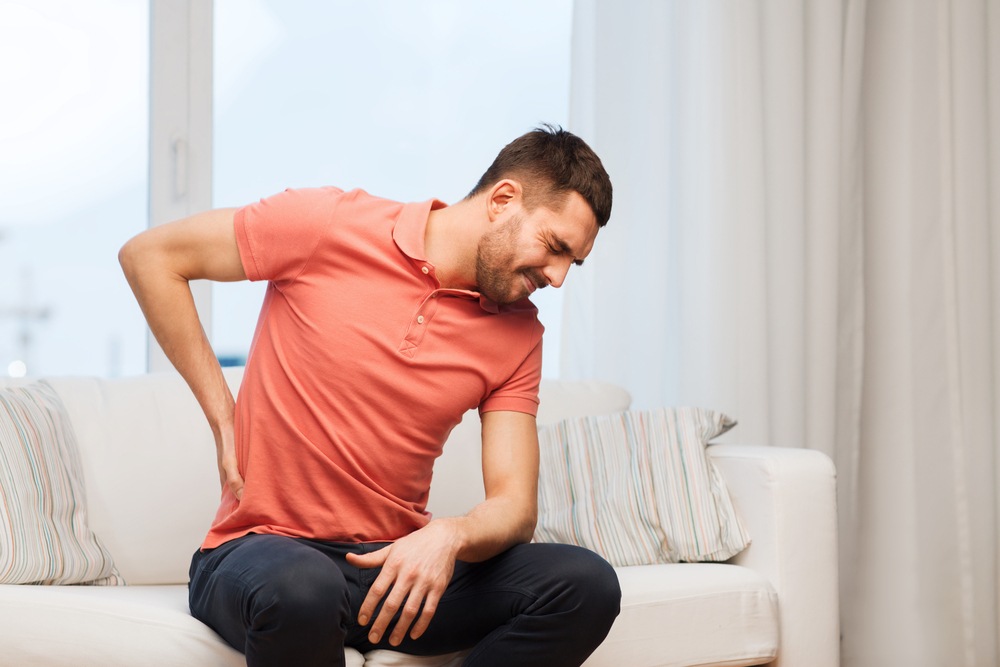Have you ever heard of herniated discs?
Of course you have! And you have heard stories about how they can limit one’s movement and restrict lives.
And of course, you might have experienced symptoms that you thought they were the symptoms of herniated discs
But you never made sure whether it is a disc herniation, a strained muscle or a sprained ligament.
So, it is time to understand more about spinal disc herniation, clear the confusion about the symptoms you have.
And if you’d like to jump straight and learn why my back herniated disc rehabilitation is always successful see what Franco, Hayley, Elizabeth Tiffany, Jan, Michaela , Huw, W.T. Police officer, Emma or Dr Christian NHS had to say about their herniated disc pain transformation.
What is a herniated disk?
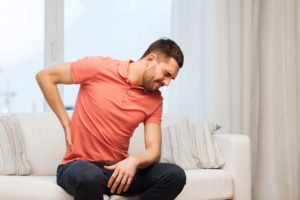
An intervertebral disc is a cushion-like structure present between a vertebra and the vertebra above. [1]
It is present along the spine to provide cushioning, allow for movement, and prevent friction between vertebrae.[1]
These discs undergo structural changes that can cause changes in how they look and function.
These changes cause these discs to bulge out of their places and compress neighboring tissues causing pain and inflammation and leading to symptoms of herniated disc. [1]
What causes a herniated disk?
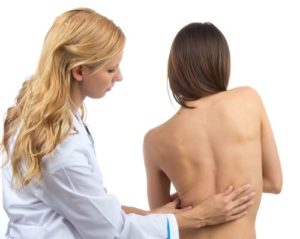 There is no single reason why herniated disc occurs.
There is no single reason why herniated disc occurs.
Disc wear and tear is a multifactorial process that can occur suddenly or over a long period of time.
Some of the most common reasons of spinal disc herniation are:
Age:
As you grow older, your discs lose their collagen content which causes structural changes in the outer layer of the disc (the annulus fibrosus) leading to bulging of the inner content of the disc (the nucluous pulposus). [1],[2]
Poor posture:
If you slouch all the time, carry your heavy bag on one side or assume poor posture for a long period of time, load falls unevenly on your disc and may lead to bulging of the disc on one side or to the center. [1],[3]
Muscle weakness:
Muscles in general and core muscles in particular play an important role in supporting your spine and keeping your discs healthy and in place.
Research shows that if your muscles are weak, your spine becomes unstable and less supported, and more uneven load falls on your herniated discs leading to disc injury and degeneration. [5]
Are you looking forward to get rid of your back pain, improve muscle strength and in a customised manner to target the muscles that will help you protect your spine?
Jazz Alessi will help you laser sharp customise your exercise programme according to your very own needs and goals.
Request a free consultation now!
Injury:
Spinal disc herniation is not always gradual. [1]
Sometimes, it can occur suddenly due to spinal injury.
For instance, in an automobile accident, or from lifting a heavy object from the floor with bad body mechanics.[1]
Steps Towards Herniated Discs Preventing
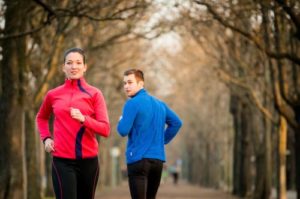 Now that you have got an idea about how disc herniation occurs, it is time to learn some easy and guaranteed methods of Herniated Discs Preventing.
Now that you have got an idea about how disc herniation occurs, it is time to learn some easy and guaranteed methods of Herniated Discs Preventing.
Herniated discs preventing is not an easy thing to do.
However, once you understand the risks and causes of disc herniation, I will teach you how to reverse them to easily maintain your spinal health.
Here are just a few of the, HOW:
Shed the Extra Pounds
Imagine a snuggly cushion being overly squeezed between two rigid surfaces.
This is exactly how the spinal discs are overloaded when you are overweight.
You might think: my vertebrae do not carry all my body weight; they only carry the weight from my upper body. [5]
That is true, every vertebra carries the weight falling on it from above.
But, this weight changes occasionally when you carry weight, move your arms or assume different position.
For instance,
If you are carrying a baby or a grocery bag, or when you bend to pick something off the floor, your vertebrae bear more weight and are more squeezed by your active muscles that are trying to perform the movement.
Imagine if that external weight you are carrying was not occasional; and it constitutes of several pounds of fat that you have to carry and your vertebrae have to bear everywhere you go.
This will increase the wear and tear process in your discs and lead to disc herniation and spinal disc injury. [6]
For this reason, maintaining a healthy weight and losing the extra pounds are good ideas to ensure a healthy spine and improve the outcomes of your disc herniation treatment. [5],[6]
Are you wondering what foods are good for your spine?
Get your meals smartly planned ahead, keep your diet plan healthy and tasty and target spinal health with Jazz Alessi…
Request a Free consultation now!
Do The Right Things Right
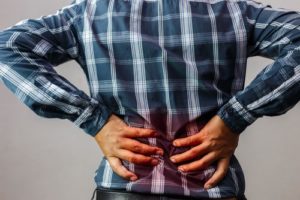 Avoiding spinal injury without developing specific awareness is actually a hard thing to do.
Avoiding spinal injury without developing specific awareness is actually a hard thing to do.
But, let’s break it into smaller goals.
To make it simpler, you can apply one single advice: Do the right things right!
Which means, if you are about to lift a heavy object, think of it first and put yourself in your spine’s shoes.
- Do you really need to carry this object?
- Can you push or pull it instead?
- Can you break the object into smaller, lighter ones?
If you have no other option and you need to lift this weight off the ground, Make sure you do that using proper lifting techniques by:
- Squatting to the level of the object
- Holding the object close to your body
- Take a deep breath and avoid holding your breath
- Tuck your tummy in, engage your core and keep your muscles tight
- Maintain your back / spine more upright
- Stand up Slowly [7]
In addition, if you follow this concept, you will ask yourself:
Do I need to sit 8 hours in front of my computer doing desk job?
If this is the right thing to do because you are in a corporate job, that is totally fine!
All you need to do is do it right…
In other words, do the following:
- Sit in the right position and watch your posture
- Sit on an ergonomically proper chair
- Move around for at least a minute every 15 – 20 minutes
- Do some desk exercises every now and then [8]
Keep your spine supported
When people hear that they have to keep their spine supported, they automatically look for a lumbar belt or a corset to hold their spine tight and keep them standing tall.
But, why use belts if you have your muscles?
Using these items, it’s OK but it leads to deconditioning your back muscles therefore, whilst some risks will decrease other will increase.
If you Exercise Regularly and strengthen your core muscles, they will work together to:
- Keep your spine in proper alignment
- Relieve load on your vertebral discs
- Prevent disc herniation and spinal injury
- Prevent muscle strain
- Prevent ligament sprain
- Reduce back pain and numbness
- Build core strength and stabilise the spine [9],[10]
After only 2 months of herniated disc rehabilitation, Franco can dramatically feel the improvement in his strength, flexibility and function.
Franco reported 85% less low-back pain, upper-body strength increase; 300%, feeling of specific lower-back strength and resistance: 95% improvement, overall wellbeing and stamina: 85% improvement which was only the start.
- “I now know there is a safe and healthy way towards a flexible and strong body and back pain-free if you suffered from a back injury, and this is Jazz’s mantra: Safety first!” Said Franco in his testimonial.
You can also find your way to the back-pain-free life you deserve, speak to Jazz Alessi now and let him relate to your symptoms.
BOOK YOUR FREE CONSULTATION NOW!Quit spine-unfriendly habits
Habits that can harm your spine extends way further than just bad posture or inactivity.
Some habits like smoking and drinking also affect your spine because they compromise the blood supply to several parts of your body including your intervertebral discs.
In a recent research, tobacco in the blood decreased the ability of intervertebral disc cells to regenerate and heal after bearing load which facilitates the wear and tear process that normally occurs with age.[11]
In addition, chemicals from cigarette smoking binds to the blood’s hemoglobin creating carboxyhemoglobin, which does not allow oxygen to bind. Thus, compromising oxygen supply to body cells. [11]
This is why it is wise to quit Smoking to Improve Blood Flow to Your Spine and keep your discs healthy.
London’s #1 Herniated Disc Exercise Program
Great achievements do not happen overnight, but the important thing is, you must be sure that you are on the right path so that your great achievements would “happen” in the first place.
Choosing the right rehab personal trainer specialist in herniated disc who will take you step-by-step towards your health and fitness goals is one of the very first things to decide on before you start a rehabilitation plan.
“Jazz Alessi was wholeheartedly invested in my recovery, would check in on me between sessions and was 100% focused and ‘present’ during my training.” This is what Hayley said after successfully recovering from her resistant back and sciatica pain in a way she has never expected.
You can also start your training with someone who cares about your every single detail; Jazz Alessi considers disc rehabilitation a full-time journey that should engage all your life aspects.
His comprehensive disc rehabilitation programme contains everything you need; from doing laser sharp customised exercises to eating the food aiding your recovery and quitting the poor habits which are harming your spine.
Jazz considers all your life details and helps you transform your body to a better place for healthier discs and spine.
All you need to do is get started and let the expert do the rest.
Contact Jazz Alessi for a FREE CONSULTATION!
Who is Jazz Alessi?
Jazz Alessi is a leading specialist rehab personal trainer who has changed many people’s concept about personal training rehabilitation in London.
He follows the most recent and up-to-date strategies to design a laser sharp customised rehabilitation programme that meets your very personal needs and goals.
No matter what your back problems are and what symptoms they cause, he will listen carefully to professionally connect the dots and understand more about your environment, personality, preferences, goals and ambitions, and will create the shortest way to safely and effectively make your health dreams come true.
REFERENCES
1. Mathur, Mudit & Jain, Nikhil & Sharma, Saksham & Rawall, Saurabh & Sharma, Shiv. (2020). Lumbar Disc Herniation: A review article. IP International Journal of Orthopaedic Rheumatology. 6. 1-11. 10.18231/j.ijor.2020.001.
https://www.researchgate.net/publication/343011138_Lumbar_Disc_Herniation_A_review_article
2. Ma D, Liang Y, Wang D, Liu Z, Zhang W, Ma T, Zhang L, Lu X, Cai Z. Trend of the incidence of lumbar disc herniation: decreasing with aging in the elderly. Clin Interv Aging. 2013;8:1047-50. doi: 10.2147/CIA.S49698. Epub 2013 Aug 7. PMID: 23966775; PMCID: PMC3743527.
https://www.ncbi.nlm.nih.gov/pmc/articles/PMC3743527/
3. Di Ciaccio, E., Polastri, M., Bianchini, E., & Gasbarrini, A. (2012). Herniated lumbar disc treated with Global Postural Reeducation. A middle-term evaluation. European review for medical and pharmacological sciences, 16 8, 1072-7 .
https://www.semanticscholar.org/paper/Herniated-lumbar-disc-treated-with-Global-Postural-Ciaccio-Polastri/d7cb29024e6ae5aec95cbb5fffc9d809321fe356
4. Goel, Atul & Dandpat, Saswat & Shah, Abhidha & Rai, Survendra & Vutha, Ravikiran. (2020). Muscle Weakness–Related Spinal Instability Is the Cause of Cervical Spinal Degeneration and Spinal Stabilization Is the Treatment: An Experience with 215 Cases Surgically Treated over 7 Years. World Neurosurgery. 140. 614-621. 10.1016/j.wneu.2020.03.104.
https://www.researchgate.net/publication/343595117_Muscle_Weakness-Related_Spinal_Instability_Is_the_Cause_of_Cervical_Spinal_Degeneration_and_Spinal_Stabilization_Is_the_Treatment_An_Experience_with_215_Cases_Surgically_Treated_over_7_Years
5. Rihn JA, Kurd M, Hilibrand AS, Lurie J, Zhao W, Albert T, Weinstein J. The influence of obesity on the outcome of treatment of lumbar disc herniation: analysis of the Spine Patient Outcomes Research Trial (SPORT). J Bone Joint Surg Am. 2013 Jan 2;95(1):1-8. doi: 10.2106/JBJS.K.01558. PMID: 23192403; PMCID: PMC3528022.
https://www.ncbi.nlm.nih.gov/pmc/articles/PMC3528022/
6. El-Masri, Dana & Kreydieh, Dima & Tannir, Hana & Itani, Leila & El Ghoch, Marwan. (2018). Long-Term Weight-Loss Lifestyle Modification Programme in a Patient with Severe Lumbar Intervertebral Disc Degeneration and Obesity: A Case Report. Reports. 1. 21. 10.3390/reports1030021.
https://www.researchgate.net/publication/328751982_Long-Term_Weight-Loss_Lifestyle_Modification_Programme_in_a_Patient_with_Severe_Lumbar_Intervertebral_Disc_Degeneration_and_Obesity_A_Case_Report
7. Workplace Athletics –– Proper Lifting Techniques: Ergonomics plus
https://ergo-plus.com/wp-content/uploads/WA-Handout-Proper-Lifting-Techniques.pdf
8. Diana E. De Carvalho –– Spine Biomechanics of Prolonged Sitting: Exploring the Effect Chair Features, Walking Breaks and Spine Manipulation have on Posture and Perceived Pain in Men and Women.
https://core.ac.uk/download/pdf/144148143.pdf
9. Chang WD, Lin HY, Lai PT. Core strength training for patients with chronic low back pain. J Phys Ther Sci. 2015 Mar;27(3):619-22. doi: 10.1589/jpts.27.619. Epub 2015 Mar 31. PMID: 25931693; PMCID: PMC4395677.
https://www.ncbi.nlm.nih.gov/pmc/articles/PMC4395677/
10. Lumbar/Core Strength and Stability Exercises: University health services – Athletic Medicine
https://www.vertibono.com/pdfs/lumbar.pdf
11. Elmasry, Shady & Asfour, Shihab & De Rivero Vaccari, Juan Pablo & Travascio, Francesco. (2015). Effects of Tobacco Smoking on the Degeneration of the Intervertebral Disc: A Finite Element Study. PloS one. 10. e0136137. 10.1371/journal.pone.0136137.
https://www.researchgate.net/publication/281551700_Effects_of_Tobacco_Smoking_on_the_Degeneration_of_the_Intervertebral_Disc_A_Finite_Element_Study



